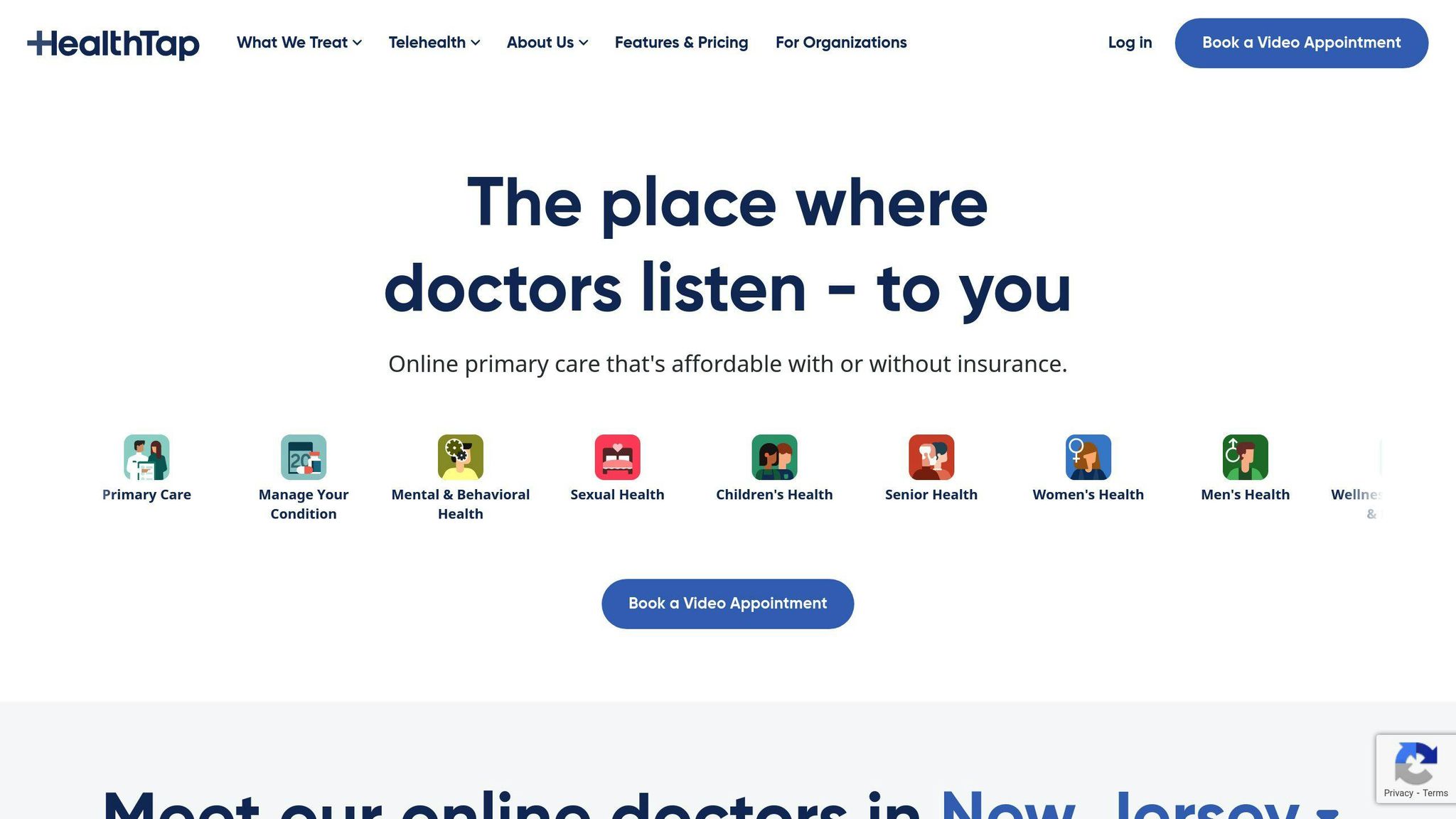AI chatbots are transforming customer interactions and internal processes for businesses. Here’s what you need to know about measuring their return on investment (ROI):
Key Metrics for AI Chatbot ROI:
- Efficiency Metrics:
- Problem resolution rate
- Average response time
- Handling time
- Escalation rate
- Customer Experience Metrics:
- Customer satisfaction rate
- Abandonment rate
- User engagement rate
- Self-service rate
- Financial Metrics:
- Cost per interaction
- Conversion rate
- Revenue per chat
- Email reduction rate
How to Calculate AI Chatbot ROI:
- Identify eligible queries
- Calculate percentage of chats for eligible queries
- Estimate agent time spent on eligible chats
- Calculate annual cost of handling eligible chats
- Compare costs with chatbot implementation
Real-World ROI Examples:
| Company | Result |
|---|---|
| 1-800-FLOWERS | 70% of GWYN users were new customers |
| Bank of America | Erica completed 330 million requests in 6 months |
| H&M | Kik chatbot achieved 86% engagement rate |
Tips for Improving ROI:
- Regular updates and improvements
- Connect with existing systems
- Ongoing training and upkeep
By focusing on these key areas and consistently measuring performance, businesses can maximize their AI chatbot ROI and improve customer experiences.
Related video from YouTube
Breaking down AI chatbot return on investment
Parts of chatbot ROI
AI chatbot ROI consists of three main parts:
1. Cost savings
Chatbots can handle a large volume of customer queries, reducing the need for human agents. This leads to significant cost reductions in customer service operations.
| Cost Saving Factor | Impact |
|---|---|
| Reduced staff needs | Up to 30% decrease in customer service expenses |
| Lower cost per interaction | $0.50 or less per chatbot interaction vs. $5 per human agent interaction |
| Decreased training costs | Savings of up to $4,000 per agent in recruitment and onboarding |
2. Revenue generation
While chatbots aren’t typically direct sales tools, they can boost revenue by:
- Improving lead generation
- Increasing conversion rates
- Enhancing customer retention
3. Customer satisfaction improvements
Chatbots can enhance customer experience by providing:
- 24/7 availability
- Quick response times
- Consistent service quality
Difficulties in measuring ROI
Measuring AI chatbot ROI comes with several challenges:
- Tracking results: It’s often hard to attribute specific outcomes directly to chatbot interactions.
- Data accuracy: Ensuring the data collected is reliable and representative can be tricky.
- Quantifying intangible benefits: Improvements in customer satisfaction or brand perception are hard to measure in monetary terms.
- Isolating chatbot impact: Separating the effects of chatbots from other customer service channels or marketing efforts can be complex.
To overcome these challenges, companies should:
- Set clear goals and KPIs for their chatbot implementation
- Use analytics tools to track chatbot performance across different channels
- Regularly gather and analyze customer feedback
- Conduct A/B testing to compare chatbot performance against other service channels
"Nearly 80% of American consumers say that speed, convenience, knowledgeable help, and friendly service are the most important elements of a positive customer experience." – PwC
Key metrics for AI chatbot ROI
To measure the effectiveness and financial returns of AI chatbots, businesses need to track specific metrics across three main categories:
Efficiency metrics
These metrics help gauge how well the chatbot handles customer inquiries:
| Metric | Description |
|---|---|
| Problem resolution rate | Percentage of inquiries resolved without human intervention |
| Average response time | How quickly the chatbot responds to user queries |
| Handling time | Duration of chatbot interactions |
| Escalation rate | Percentage of conversations transferred to human agents |
Customer experience metrics
These indicators reflect how users perceive their interactions with the chatbot:
| Metric | Description |
|---|---|
| Customer satisfaction rate | User feedback on chatbot interactions |
| Abandonment rate | Percentage of users who exit conversations prematurely |
| User engagement rate | How often users interact with the chatbot |
| Self-service rate | Percentage of sessions resolved without contact actions |
Financial metrics
These measurements help quantify the chatbot’s impact on the bottom line:
| Metric | Description |
|---|---|
| Cost per interaction | Expenses associated with each chatbot conversation |
| Conversion rate | Percentage of chatbot interactions leading to desired actions |
| Revenue per chat | Income generated from chatbot-assisted transactions |
| Email reduction rate | Decrease in email volume due to chatbot use |
To get a clear picture of AI chatbot ROI, it’s crucial to compare these metrics with pre-chatbot indicators. For example, contrast the volume of phone contacts and incoming emails before and after chatbot implementation.
"Information is the oil of the 21st century, and analytics is the combustion engine." – Gartner Research
This quote highlights the importance of using data to drive decisions about chatbot performance and optimization.
Some key insights for improving chatbot ROI:
- Monitor problem resolution rates to identify areas for improvement
- Use end-of-conversation surveys to gather direct user feedback
- Analyze abandoned conversations to understand why users leave
- Optimize chatbot responses to reduce abandonment rates
How to calculate AI chatbot ROI
Calculating the return on investment (ROI) for AI chatbots is a structured process that requires careful consideration of various factors. Here’s how to approach it:
Step-by-step ROI calculation
1. Identify eligible queries
Examine your current customer service inquiries and determine which ones a chatbot could handle. Typically, 80% of queries are simple enough for AI chatbots to manage.
2. Calculate the percentage of chats for eligible queries
Determine the ratio of simple to complex queries. For example, if you receive 10,000 monthly inquiries and 8,000 are simple, your percentage is 80%.
3. Estimate agent time spent on eligible chats
Calculate the average time agents spend resolving simple inquiries. For instance, if each simple query takes 5 minutes to resolve, the total time spent would be:
8,000 queries x 5 minutes = 40,000 minutes or 667 hours per month
4. Calculate the annual cost of handling eligible chats
Multiply the hours spent by the average hourly wage of your agents. If the average wage is $21 per hour:
667 hours x $21 x 12 months = $168,084 annual cost
5. Compare costs with chatbot implementation
Estimate the cost of implementing and maintaining a chatbot. If it costs $50,000 annually, your potential savings would be:
$168,084 – $50,000 = $118,084 per year
This simplified calculation shows a positive ROI for chatbot implementation.
Factors affecting ROI
Several costs impact the ROI calculation:
| Cost Type | Description |
|---|---|
| Implementation | One-time expenses for chatbot setup and integration |
| Licensing | Ongoing fees for chatbot software or platform usage |
| Maintenance | Regular updates and improvements to the chatbot |
| Training | Costs associated with teaching staff to manage the chatbot |
| Human oversight | Expenses for employees monitoring and assisting the chatbot |
Common mistakes and how to avoid them
- Overlooking hidden costs: Include all expenses, not just the obvious ones.
- Ignoring quality metrics: Don’t focus solely on cost reduction. Consider customer satisfaction and resolution rates.
- Unrealistic expectations: Be conservative in your estimates. It’s better to underestimate savings than to overpromise.
- Neglecting long-term impact: Factor in potential increases in efficiency and customer satisfaction over time.
- Failing to measure baseline performance: Collect data on current operations before implementing a chatbot to ensure accurate comparisons.
sbb-itb-58cc2bf
Real examples of AI chatbot ROI
AI chatbots have shown impressive returns on investment across various industries. Let’s look at some real-world examples:
Retail example: 1-800-FLOWERS

1-800-FLOWERS implemented GWYN (Gifts When You Need), an AI-powered gift concierge:
- 70% of customers using GWYN were new to the brand
- Increased conversion rates and average order value
- Improved customer satisfaction through personalized recommendations
Banking example: Bank of America‘s Erica

Bank of America’s AI assistant, Erica, has shown strong results:
- Completed 330 million requests in the first half of 2023
- Averages 56 million monthly engagements
- Handles 60% of proactive and personalized account management
A Bank of America spokesperson stated: "Erica has become an integral part of our digital banking experience, helping customers manage their finances more efficiently."
Healthcare example: HealthTap‘s Dr. A.I.

HealthTap’s Dr. A.I. chatbot has improved patient care and operational efficiency:
- Reads patients’ symptoms and connects them with specialized doctors
- Reduced response times
- Improved triage efficiency, directing patients to appropriate care levels
E-commerce example: H&M’s Kik Chatbot
H&M’s fashion advice chatbot on the Kik platform has shown impressive engagement:
| Metric | Result |
|---|---|
| Engagement rate | 86% |
| Average interaction time | 4 minutes |
| Click-through rate | 8% |
Compared to H&M’s email marketing click-through rate of 2%, the chatbot’s performance is notably higher.
These examples demonstrate that AI chatbots can deliver tangible ROI across different sectors by improving customer engagement, streamlining operations, and boosting sales conversions.
Tips for improving AI chatbot ROI
To boost the return on investment from AI chatbots, businesses should focus on three key areas:
Regular updates and improvements
Keeping chatbots up-to-date is crucial for maintaining their effectiveness. This involves:
- Analyzing chatbot data to spot areas for improvement
- Updating content to reflect current information, especially during peak seasons
- Fine-tuning natural language processing models
For example, 1-800-FLOWERS regularly updates GWYN, their AI gift concierge, with new product information and seasonal recommendations. This has helped maintain GWYN’s high performance, with 70% of its users being new customers.
Connecting with existing systems
Integrating chatbots with current business systems can greatly improve efficiency. Steps to achieve this include:
- Using well-documented APIs for secure system communication
- Automating routine tasks to free up human agents
- Implementing a multichannel approach for customer interactions
Bank of America’s Erica is a prime example of successful integration. By connecting with various banking systems, Erica handles 60% of proactive account management tasks, averaging 56 million monthly engagements.
Ongoing training and upkeep
Continuous improvement is key to meeting business goals. This involves:
- Monitoring conversations to identify common issues
- Gathering customer feedback through surveys
- Conducting regular load testing to ensure performance during high-traffic periods
HealthTap’s Dr. A.I. demonstrates the impact of ongoing training. Through continuous learning from patient interactions, it has improved its ability to connect patients with specialized doctors and reduce response times.
| Action | Benefit |
|---|---|
| Regular content updates | Ensures accuracy and relevance |
| System integration | Streamlines operations |
| Continuous training | Improves response accuracy |
| Performance monitoring | Identifies areas for optimization |
Future of AI chatbot ROI
New technologies and their effects
AI chatbots are evolving rapidly, with new technologies set to boost their effectiveness and ROI potential. Natural Language Processing (NLP) and Natural Language Understanding (NLU) are enabling chatbots to engage customers in more languages, expanding their global reach.
For example, Nissan Saudi Arabia saw a 138% increase in leads and a 71% rise in unique users after implementing an AI-based WhatsApp chatbot. This shows the power of language-specific AI in boosting ROI.
Multi-bot systems are emerging as a way to enhance customer service. Instead of one general chatbot, companies are deploying specialized bots for different tasks. This approach allows for more detailed and efficient customer interactions.
| Bot Type | Function | Benefit |
|---|---|---|
| Returns Bot | Handle product returns | Streamline return process |
| Product Selection Bot | Assist with choosing products | Increase sales conversion |
| Shipping Bot | Answer shipping queries | Reduce customer service load |
Future AI chatbot changes
The integration of AI chatbots with other technologies is set to transform their capabilities:
- Metaverse Integration: Chatbots will become guides in virtual environments, offering personalized support in digital spaces.
- Enhanced Contextual Awareness: Future chatbots will better understand user behavior and preferences, leading to more tailored interactions.
- Omnichannel Experience: Seamless transitions between communication platforms will be possible without losing context.
- Complex Conversation Handling: AI will master nuanced support, rivaling human representatives in handling complex queries.
These advancements are expected to significantly impact ROI. According to Gartner, by 2025, 85% of customer interactions in the Middle East are predicted to be processed without human agents.
However, it’s important to note that the business value of generative AI is still developing. Arun Chandrasekaran, VP analyst at Gartner, states:
"There’s still a lot of progress that we need to make around all of this for us to eventually see value and get to the goal at the top of the mountain."
To maximize ROI from these future changes, businesses should:
- Invest in training AI for complexity and empathy
- Develop a solid GenAI content creation strategy
- Integrate predictive analytics into chatbots
- Focus on emotional intelligence in AI interactions
Conclusion
Key takeaways
AI chatbots have become essential tools for businesses, offering significant benefits in customer service, sales, and operations. Here are the key points to remember when measuring AI chatbot ROI:
- Efficiency metrics: Track response times, query resolution rates, and agent productivity.
- Customer experience metrics: Monitor customer satisfaction scores, engagement rates, and retention.
- Financial metrics: Measure cost savings, revenue generation, and overall return on investment.
To calculate AI chatbot ROI effectively:
- Track chatbot interactions over time
- Analyze trends and areas for improvement
- Update content and capabilities frequently
Closing thoughts
Understanding and improving AI chatbot ROI is crucial for business growth and customer satisfaction. Companies that have successfully implemented chatbots have seen impressive results:
| Company | Result |
|---|---|
| Iba Cosmetics | 260% increase in online sales |
| Dunzo | 30% reduction in support costs |
These outcomes highlight the potential of AI chatbots when properly implemented and maintained. As Amr Onsy, Director of Customer Service, noted:
"The intuitive and engaging chatbots extended beyond simple answers to offer intent-based solutions. Agents no longer had to engage in routine conversations with customers."
To make the most of AI chatbot technology:
- Regularly update and improve chatbot features
- Connect chatbots with existing systems like CRM
- Provide ongoing training to adapt to changing needs
FAQs
How to benchmark chatbot performance?
To benchmark chatbot performance, focus on these key metrics:
- Bot Experience Score
- Bot Automation Score
- Cost per Automated Conversation
- Agent Experience Score
- False Positive Rate
- Bot Repetition Rate
- Positive Feedback Rate
- NLU (Natural-Language Understanding) Rate
These metrics help you gauge your chatbot’s effectiveness across various aspects of user interaction and operational efficiency.
How do I track chatbot performance?
To track chatbot performance, monitor these important metrics:
| Metric | Description |
|---|---|
| Total interactions | Number of messages exchanged between chatbot and users |
| Average chat duration | Time users spend interacting with the chatbot |
| Goal Completion Rate (GCR) | Percentage of users achieving desired outcomes |
| Missed utterances | Instances where chatbot fails to understand user input |
| Human takeover rate | Frequency of human agent interventions |
| Customer Satisfaction Score (CSAT) | Measure of user satisfaction with interactions |
| Retention rate | Percentage of returning users |
| Conversion rate | Percentage of users taking desired actions |



